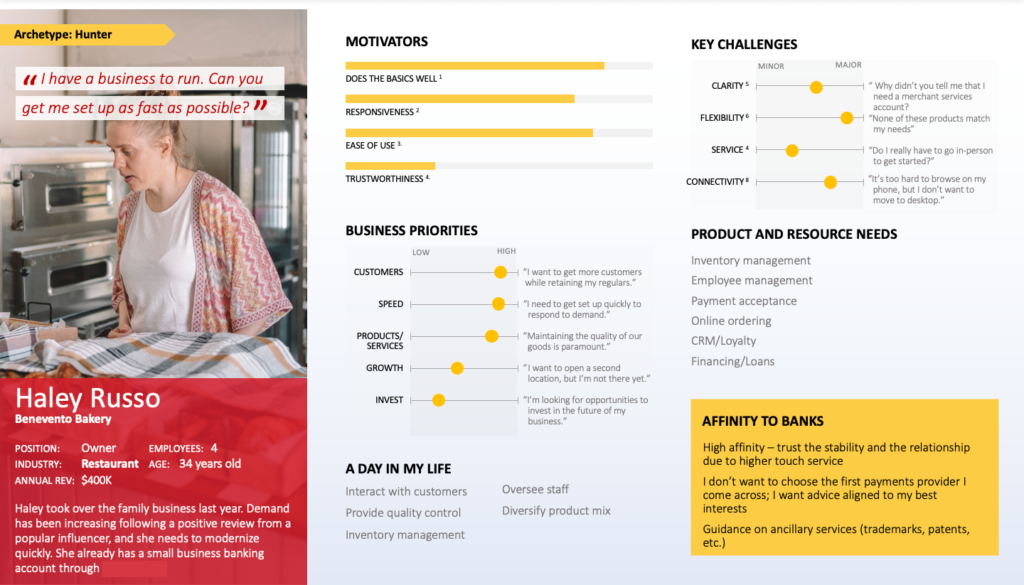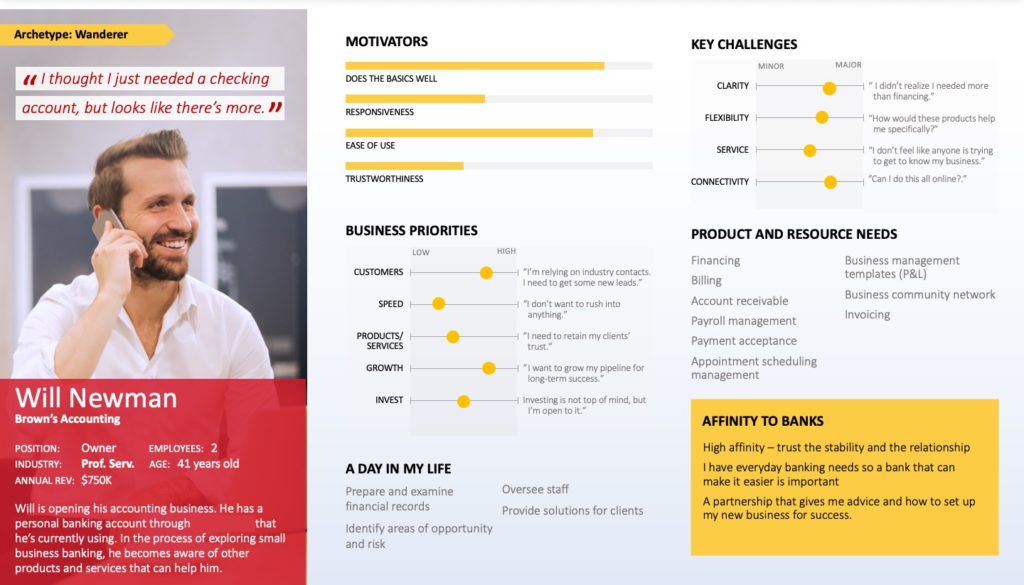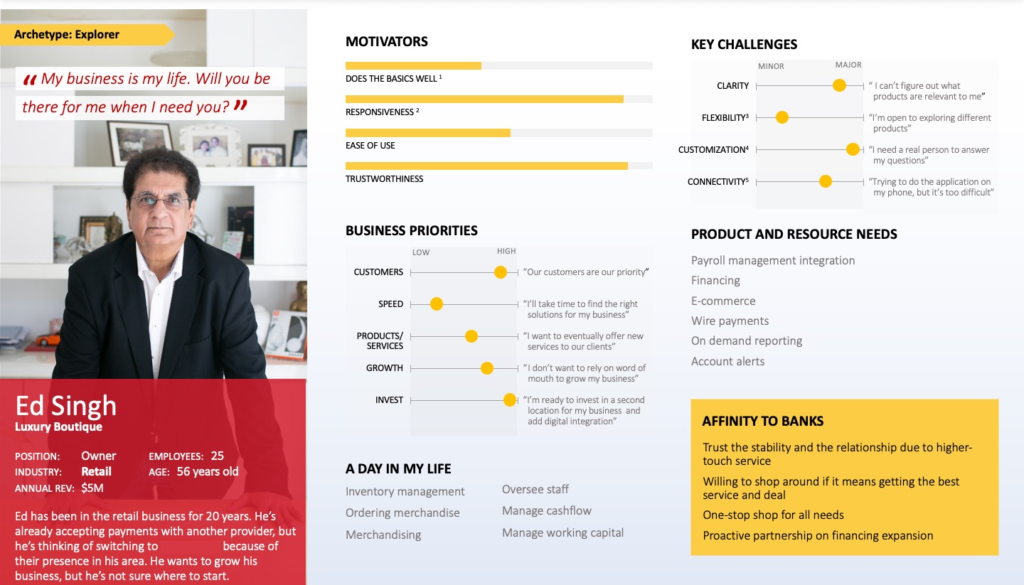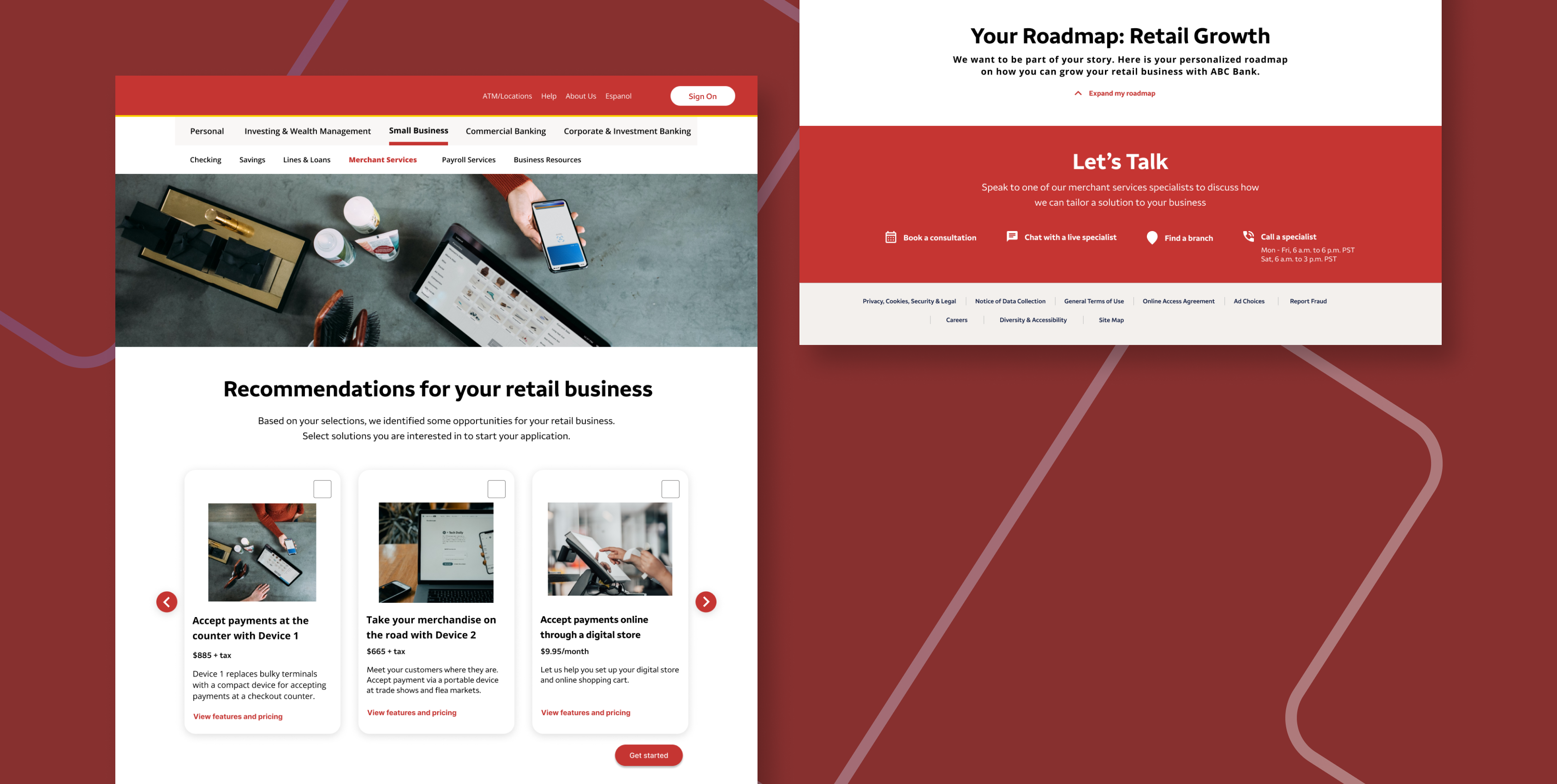A Multinational Financial Services Company
Reimagining a multinational bank’s external Small Business Banking page is a complex undertaking. Small business owners are a diverse group with unique financial needs, and a well-crafted user experience is crucial for serving them effectively.

Research
UX research was a cornerstone of our design process. We conducted comprehensive research, involving both stakeholders and end-users, to gain invaluable insights that guided our design decisions, ensuring that our solutions were not only innovative but also tailored precisely to meet the unique needs of our target audience.
Iterating
Iterating our work was essential as it allowed us to refine and enhance our designs based on user feedback, keeping us aligned with evolving user preferences and industry standards. Collaborating closely with our team was equally crucial, as it facilitated cross-functional insights and collective problem-solving, leading to more holistic and effective design solutions.
Testing
Testing played a vital role in ensuring the success of our designs by uncovering usability issues and validating our assumptions. It helped us identify areas of improvement and refine the user experience, ultimately leading to a more user-friendly and effective product that surpassed expectations of our client.



Creating three different user personas based on the Hunter, the Wanderer, and the Explorer archetypes was a valuable strategy for understanding and addressing the needs and pain points of a diverse user audience.
Tailored Experiences: Each archetype represents a distinct user mindset and behavior. By developing personas for the Hunter, who seeks specific information; the Wanderer, who explores various options casually; and the Explorer, who is open to new experiences, designers can tailor user experiences to cater to these specific preferences.
Targeted Problem Solving: Different archetypes have unique pain points and priorities. By identifying these pain points through personas, designers can prioritize and address the most pressing issues for each archetype, resulting in a more comprehensive and effective solution.
Iterative Improvement: Continuously updating and refining these personas based on user research and feedback ensures that the product evolves to meet changing user needs. This iterative approach helps in staying ahead of the curve and adapting to evolving user expectations, ultimately leading to a more successful and user-friendly product.

User journeys are crucial in the context of user experience because they provide a structured path for each archetype, such as the Hunter, Wanderer, and Explorer, to achieve their goals within a digital product. By mapping out these journeys, designers can align features and interactions to cater to the specific needs and preferences of each archetype, enhancing overall user satisfaction. Additionally, understanding the unique user journeys of these archetypes helps in identifying opportunities for the client that could push their user experience to the next level.
The Final Product



